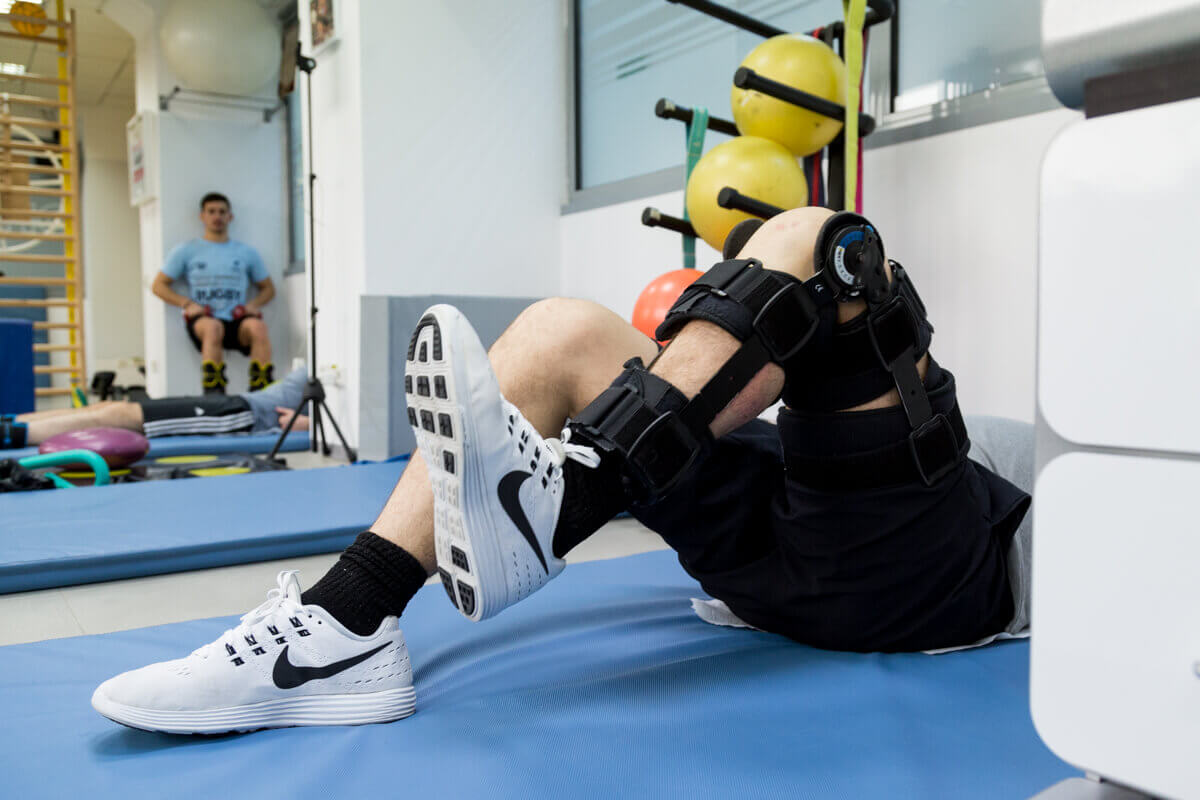See details
READ MORE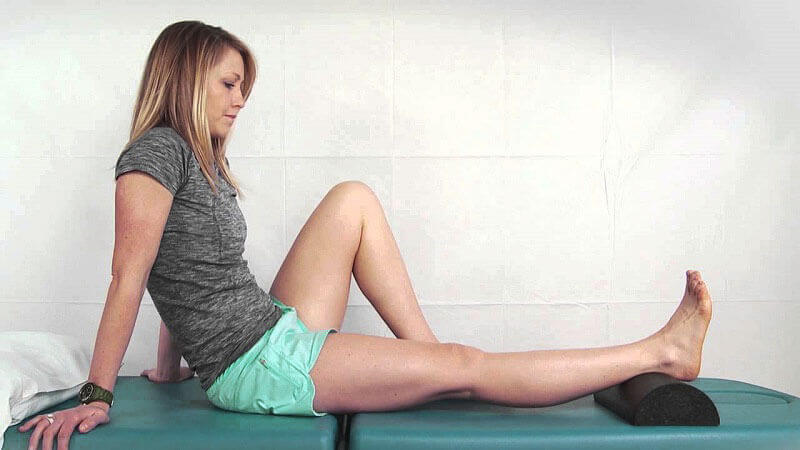
Recovery protocol after knee arthroscopy
Phase I - The first week after arthroscopy
Objectives:
- Pain and swelling control
- Maintaining knee motility
- Activation of the quadriceps muscles
Guides and activities:
- You can load with all the weight and walk on the affected leg. In some instances, crutches will be used for the period immediately following surgery if walking is uncomfortable.
- Remove the bandage when you get home and apply ice directly to your knees. Change the bandages whenever needed.
- Gently mobilize your knee (flexion and extension) as much as you can to prevent stiffness. Do not place a pillow under your knees for comfort. This can lead to knee stiffness.
- Apply ice to reduce pain and swelling. Use ice according to the following schedule: Applying ice for 20 minutes, and pause for another 20 minutes during the first postoperative day. Then apply the ice whenever you feel the need for 15-20 minutes over the next few days after arthroscopy. Put a towel between the skin and the ice to prevent frostbite.
- You can shower and wet the incisions of the portals. However, do not soak them in the tub until the threads have been removed.
- Take an aspirin every morning.
- You can wear elastic stockings under the knees to prevent swelling of the feet. Also, do at least 10 ankle mobility exercises to prevent edema and prevent thrombophlebitis.
Exercise program:
Exercises of the quadriceps muscle - to maintain muscle tone at the thigh and to strengthen the knee.Heel support - to fully stretch your knee, lie on your back with a towel rolled under your heels, or sit on a chair with your heel on a stool, just like in the picture. Allow the knee to relax in extension. If the knee will not stretch completely, you can put a weight (900 g to 2.25 kg) on the thigh, just above the kneecap. Try to maintain this position for 5 minutes, 3 times a day. While maintaining this extension position, continue the quadriceps exercises.
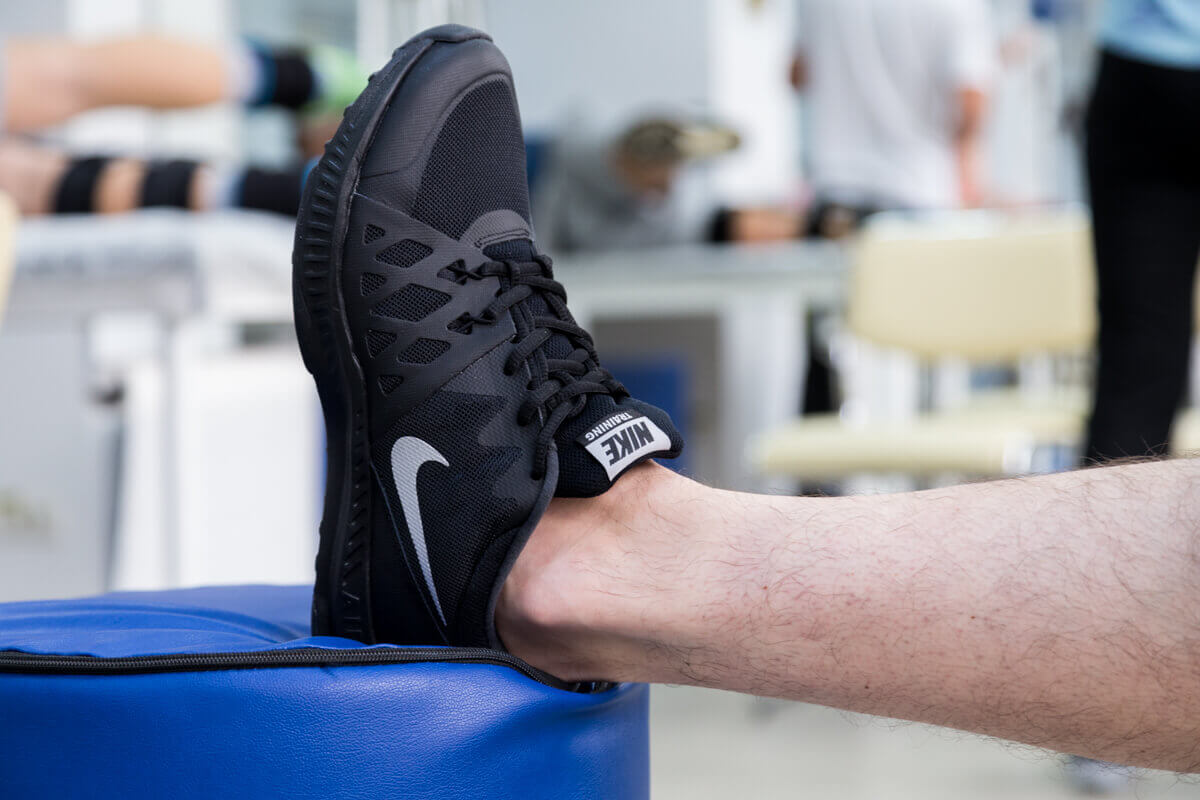
Plantar flexion and dorsiflexion of the foot - mobilize the foot up and down to stimulate the blood flow in the foot. Perform at least 10 such movements every hour.
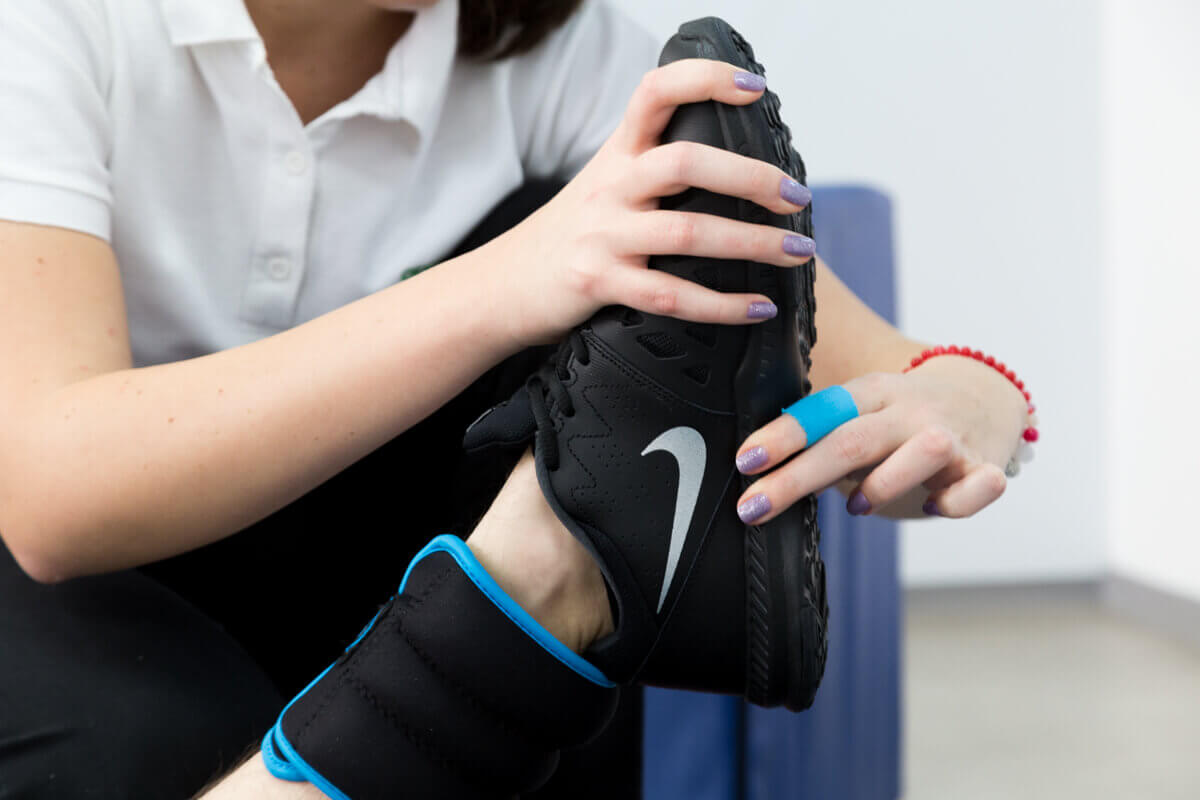
Phase II - 2 to 6 weeks postoperatively
Objectives:
- Protect your knee from overload and allow healing
- Gain complete mobility
- Regain full muscle strength
Activities:
- You can fully charge and walk while avoiding limping. Avoid walking long distances for 4-6 weeks postoperatively.
- Continue with ice applications to reduce pain and inflammation. Put ice on your knees 3 times a day for 15-20 minutes. Always put a towel between the skin and the ice to prevent frostbite.
- Do not put a pillow under your knees for comfort. This can lead to stiffness of the joint.
Exercise program
Medical bicycle
Use a medical bicycle to mobilize the knee and increase its flexion. If you cannot perform a complete cycle, keep the operated foot on the pedal and pedal back and forth until the knee bends enough to allow a complete cycle. Most people manage a complete cycle first in the opposite direction, followed by the forward direction. You can use the bicycle, without resistance, for 10 to 20 minutes a day. Adjust the height of the bicycle saddle so that when you are riding the bike, the knee is fully extended when the pedal is in the lowest position. Pedaling will be done with the help of the forefoot (toe), and not the heel.
Quadriceps muscle exercises - to maintain muscle tone in the thigh and to strengthen the knee.
Sit on your back with your knee at maximum extension as shown. Contract and maintain the contraction of the anterior muscles of the thigh (quadriceps), the knee becoming flattened and straight. If done correctly, the patella will slide proximal to the thigh muscles.
Hold the contraction for 5 seconds. Perform at least 20 repetitions 3 or 4 times a day until you can stretch your knee to the same level as the unoperated part.
Standing on the heel - to fully extend the knee.
Lie on your back with a towel rolled under your heels or sit on a chair with a heel on a stool, just like in the picture. Allow the knee to relax in extension. If the knee will not stretch completely, you can put a weight (900 g to 2.25 kg) on the thigh, just above the kneecap. Try to maintain this position for 5 minutes, 3 times a day. While maintaining this extension position, work the quadriceps exercises.
Heel slides - to regain your knee flexion
While lying on your back (figure), slide your heel to bend your knee. Continue to bend the knee until you feel a "stretch" in the anterior region of the knee. Hold the flexion for 5 seconds and then relieve the flexion and stretch the knee. While the knee is stretched, you can combine the exercises and repeat the quadriceps. Continue these exercises until you can bend the knee like the part without ACL injury (unoperated side). Also, as you regain your flexion, you can use a towel to progress with knee flexion. Repeat 20 times, 3 times a day.
Leg extensions - Contract the quadriceps muscle so that the knee is flat, straight, and fully extended. Try to lift the entire operated limb off the bed or floor plane. If you can keep your knee straight up to about 45 degrees, pause for a second and then gently lower your foot back on the bed. Relax and repeat. If your knee bends as you try to lift your limb, do not continue with these exercises. Try the quadriceps exercises again until you can lift the limb without bending the knee.
Short lifts - With your knee bent over a rolled towel or blanket, lift your leg so that your knee is fully extended. Keep your knee locked in extension for 5 seconds, then lower gently. Repeat 20 times.
Waving hamstring legs - Position yourself facing the wall, using it for balance and support. While sitting on the limb without an LIA injury, bend your knee and raise your knee to the bottom. Keep this position flexed for one second. Gently lower your limb back to the floor. Keep your hips aligned as shown. Repeat 20 times.
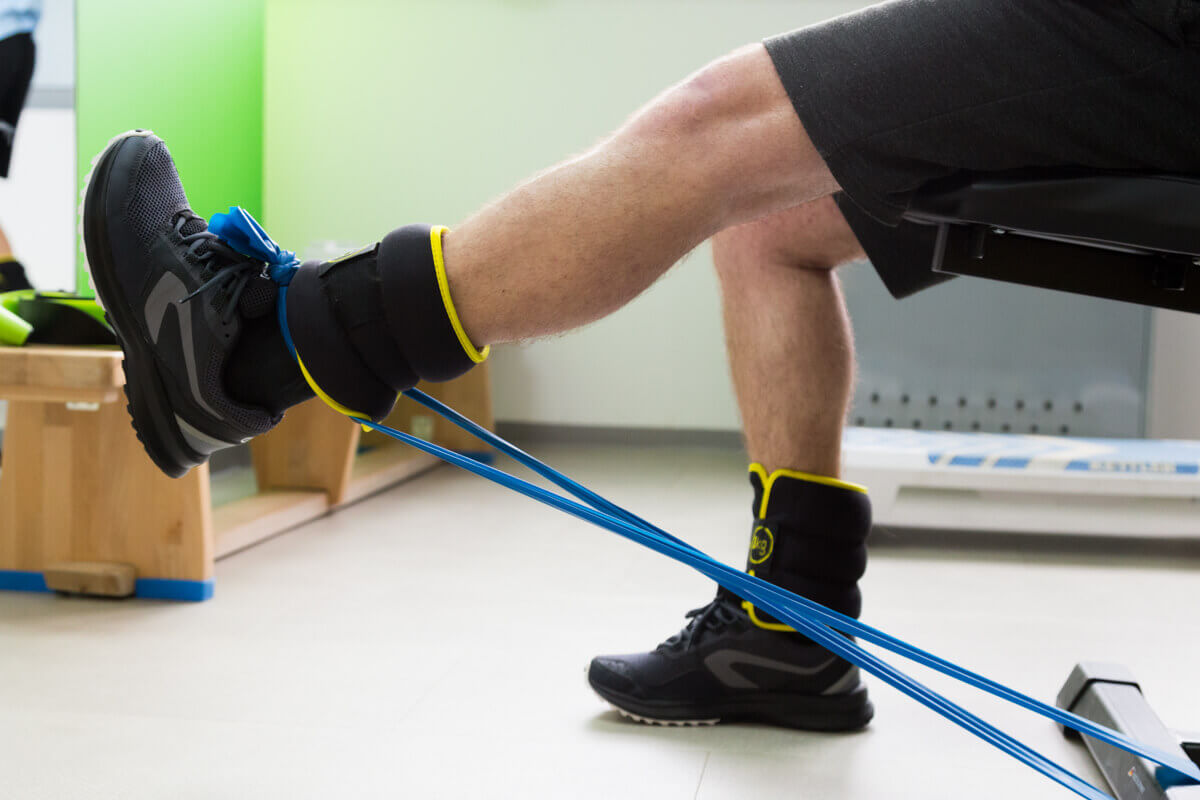
Hip abduction
Lie on the healthy side. The knees will be in maximum extension. Raise the operated limb up to 45 degrees, as in the figure below. Hold this position for a second, then return slightly. Repeat 20 times.
NB: All progressions are approximations and should only be used as guidance. Progression will be based on the individual condition of the patient, which is assessed throughout the treatment process.

MAKE AN APPOINTMENT
CONTACT US
SUCCESSFUL RECOVERY STORIES
MAKE AN APPOINTMENT
FOR AN EXAMINATION
See here how you can make an appointment and the location of our clinics.
MAKE AN APPOINTMENT

